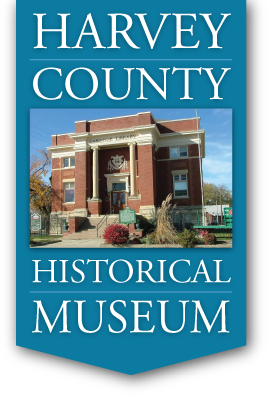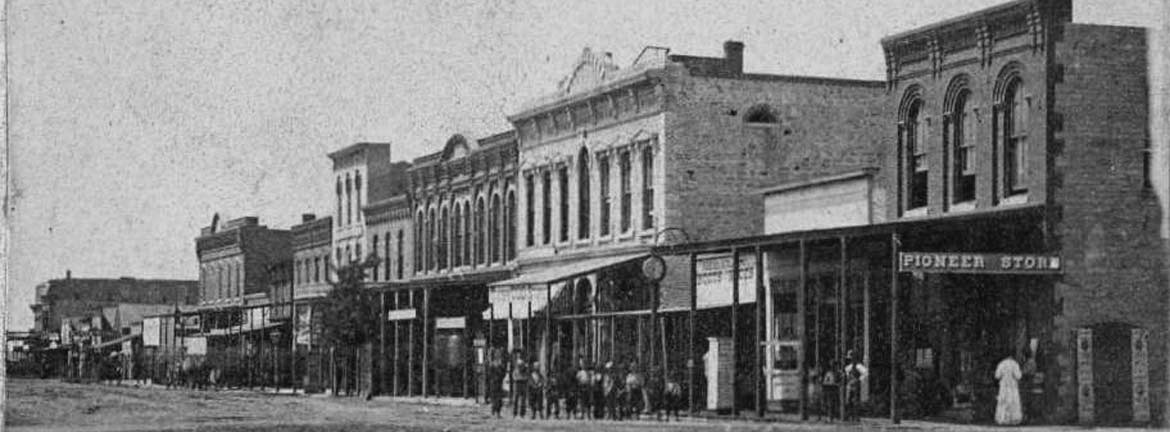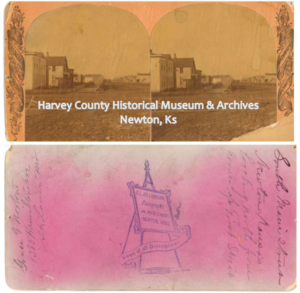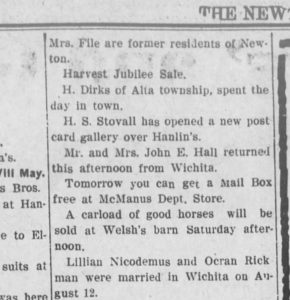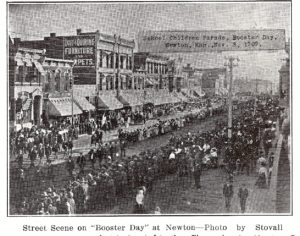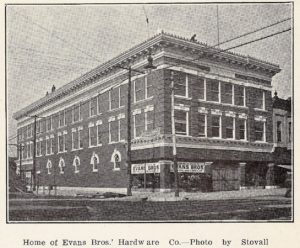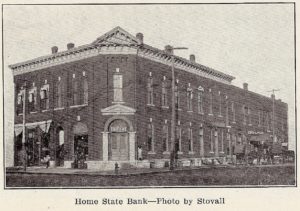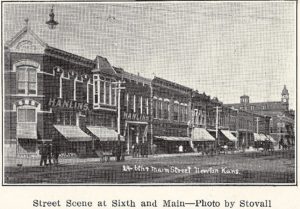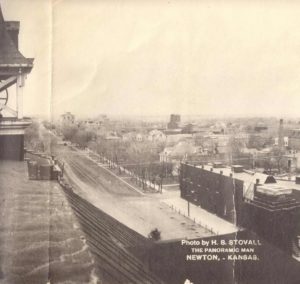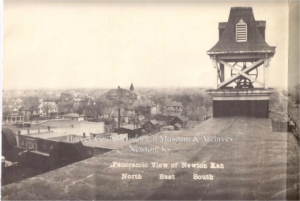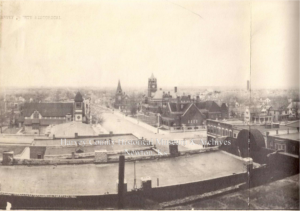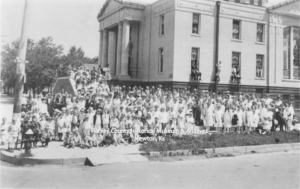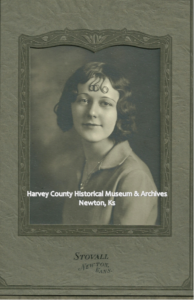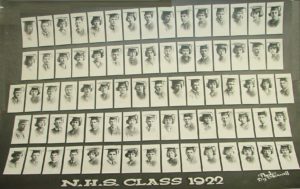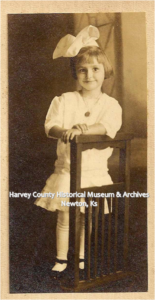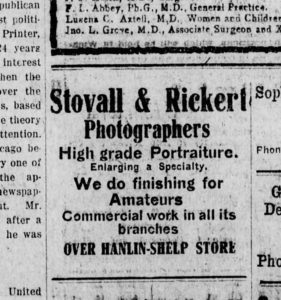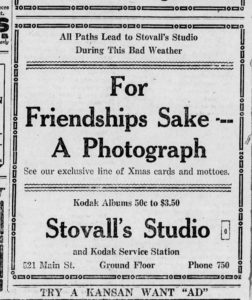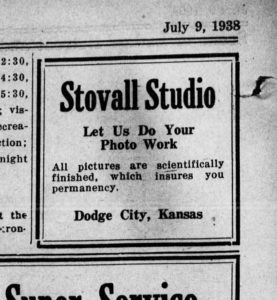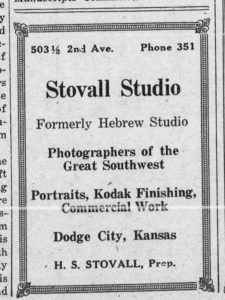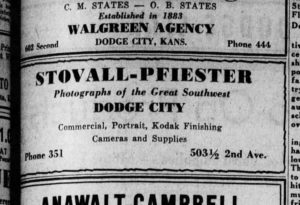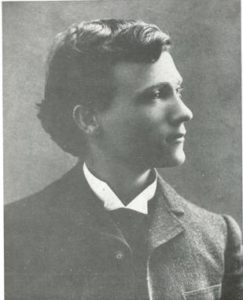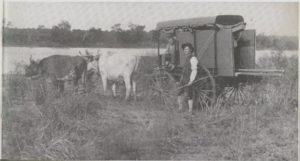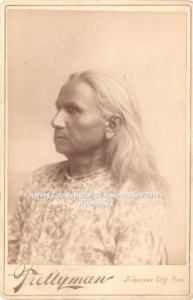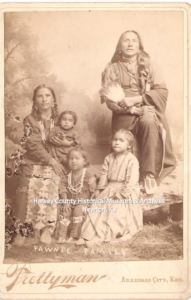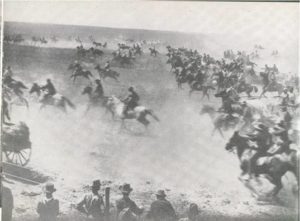Previously published August 29, 2013 at Voices of Harvey County: A Gentleman and a No. 1 Artist: Pioneer Photographers Part 2 (harveycountyvoices.blogspot.com)
For Part 1 of this two-part series on Newton’s earliest photographers click here.
“A Gentleman and a No. 1 Artist”
“which stood at the southwest corner of the Gate office was, with its glassy contents, entirely demolished. . . . The loss to Mr. Gillingham is a rather serious one. A large number of valuable negatives were entirely demolished which can never be replaced.” (Newton Kansan 12 August 1880, p.2)
Ready for Business Again
 |
| Newton Kansan, 16 September 1880 |
After September 1880, the advertisements for Gillingham, “the shadow catcher”, no longer appear in the Kansan. Gillingham does not appear in the 1885 City Directory. Only two photos in our collection have Gillingham’s mark on the back. Other than the Summer of 1871 photo, these are the earliest photos of Newton in the museum’s collection.
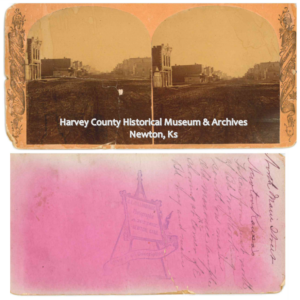
North Main, Newton, Ks
Taken from just north of Broadway looking south. Old Masonic Temple along northeast corner of east Broadway & Main. pre-1880.
Although there are no definitive answers to ‘who’ took the “Summer of 1871” photo of Newton’s Main St., one possibility is Charles Gillingham, a photographer who was in Kansas in 1871. When he left Newton sometime in the fall of 1880, he may have left fellow photographer, F.D. Tripp, the negative. Tripp then reprinted the photo, mounted it using his logo and in doing so, preserved this brief glimpse at Newton’s very beginnings.
Research Notes:
F.D. Tripp was quite hard to pin down. If we knew for certain his age in the summer of 1871, a clearer idea of who actually took the photo could be determined. Depending on which document is correct, his birth year is given as:
- 1856 (1887 Harvey County Tax Rolls & 1947 Obituary); 1857 (1886 Harvey County Tax Rolls); 1858 (1870 Census);1859 (1880 Census); 1866 (1900 Census).
For the purposes of this blog post, a time span of roughly 1856-1858 was assumed for the birth year of F.D. Tripp.
Sources
- Newton Kansan, 1872-1881.
- Newton Kansan, 8 January 1880, p. 1
- Newton Kansan, 12 August 1880, p. 2.
- Newton Kansan, 19 August 1880, p. 2.
- Newton Kansan, 26 August 1880, p. 3.
- Newton Kansan, 16 September 1880, p. 2..
- Evening Kansan-Republican, September 6, 1947, p.1.
- Newton City Directories, 1885, 1887, 1902, HCHM Archives.
- United States Census, 1870, 1880, 1900.
- Newton Voter Registration Index 1882-1902, HCHM Archives.
- Harvey County Marriage License Index, 1882, HCHM Archives.
- Anthony’s Photographic Bulletin, Vol. 27, Google Books, p. 382.
